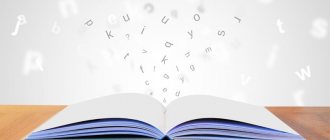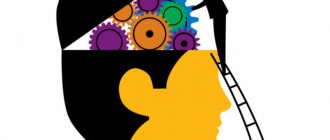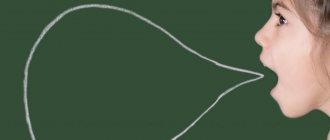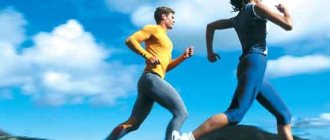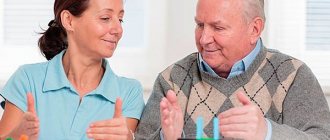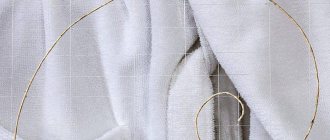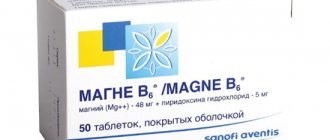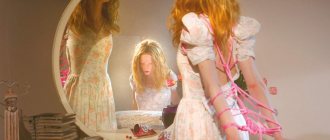Basics
Basic Concepts
Body-oriented therapy is based on a fundamental concept, without which this direction cannot be imagined.
This is a bodily shell, although it has many other synonymous terms: muscular, muscular, characterological armor, muscle clamps, ego-defense. In total, the human body is divided into 7 problem areas, where it can form in accordance with the received psychological trauma. According to Wilhelm Reich, the bodily shell is the body’s defenses, physically suppressing fears, internal anxiety, complexes and everything that poses a threat to the psyche.
Orgone energy is what Reich called libido, known to everyone according to Freud, which is released as a result of working with shells.
Unraveling is the name given to the process of releasing muscle tension in body-oriented therapy.
1. Psychotrauma.
2. The specific situation associated with it is causing concern.
3. A person seeks to protect himself from this anxious state and a repetition of what happened.
4. He suppresses his fear with the help of “muscle clamps” in a certain part of the body.
5. This forms simultaneously:
- character or pattern of behavior;
- bodily shell.
1. At school, the child is constantly told that he is nothing.
2. He doesn’t want to go to school because of this.
3. Since this must be done day after day, he tries to avoid direct contact with the one who tells him this.
4. Does not look into the eyes, lowers his gaze, closes his eyes, wrinkles his forehead.
To help a person solve his problems, body psychotherapy works in parallel with both entities - external and internal:
- The type of bodily shell is revealed, and where exactly it is located.
- Gradually relieve tension from the problem area of the body using various techniques.
- Along the way, psychotrauma is revealed.
- Parallel work is underway with it.
- Orgone energy is released.
- Neurotic and other disorders are cured.
For a long time, within the framework of body-oriented psychotherapy, specialists worked only with muscle tension, believing that after their elimination, psychological trauma would automatically disappear. And only after a while it was concluded that it was necessary to remove both at the same time. This way you can ensure a lasting effect of the sessions and a guarantee that the problem will not return again.
Bioenergy analysis
The author of bioenergetic analysis, a student of Reich, Alexander Lowen lived for 98 years and left behind a detailed methodology for working with the psyche through the body, an institute, many interesting books and special exercises or, as he called them, bioenergetic experiments [3], which, obviously, combined with good genetics, they helped him live for almost a century. A good advertisement for the method, isn't it?
“I don’t do psychotherapy, I do bioenergy,” Lowen said. Nevertheless, a well-developed theory of personality, largely based on Freud’s typology, allows us to say that bioenergetics is precisely a psychotherapeutic system.
Even if you have never heard of Lowen before, you are definitely familiar with one of the basic concepts of his system - “grounding”. It was the American psychotherapist who first drew attention to the importance for physical and psychological health of how stable a person is, how much he feels support under his feet.
Lowen's typology operates with so-called character structures. This is a combination of chronic muscle tension, psychological defenses at the bodily level, characteristic of a particular person. Tensions are formed at different stages of a child’s growing up and are associated with certain developmental traumas. Lowen's psychoanalytic typology now appears pathologizing. “Schizoid,” “masochist,” “psychopath,” “phallic narcissist”—to non-specialists, these words sound more like a medical diagnosis or a curse word than a description of a person’s character. Modern TOP modalities, focused primarily on resources rather than problems, interpret Lowen’s classification in their own way. We'll see how later.
Methods
Based on the concept of Wilhelm Reich, various methods of body-oriented psychotherapy and approaches to the relationship between the body and psyche were created.
Basic methods of body-oriented therapy:
- bioenergy system therapy (bioenergy system therapy, BEST) E. I. Zueva: impact on the mind, feelings and body to treat the psyche;
- vegetative (somatic, bodily) therapy by W. Reich;
- movement practice of M. Feldenkrais, the goal of which is to teach a person to move correctly (like children) in order to relieve muscle tension;
- organismic psychotherapy by M. Brown: the shell is considered as a mismatch between the body and the brain;
- radix (source of vital energy) C. Kelly - a group version of body-oriented therapy;
- Rosen method M. Rosen: work with tense muscles in combination with verbal contact;
- Rolfing (structural integration) I. Rolf: work on improving gait, posture, sitting style, communication style, their relationship with behavioral patterns;
- somatic psychotherapy of biosynthesis by D. Boadella: work with 3 life streams - endoderm, mesoderm and ectoderm;
- body-oriented bioenergetic psychoanalysis (bioenergetics) by A. Lowen;
- Hakomi (body-centered psychotherapy) by R. Kurtz: the main methods are dance-movement therapy, yoga, meditation.
Partially based on body-oriented therapy are methods such as:
- Core-energy D. Pierrakos;
- biodynamics G. Boysen;
- insight therapy (bodily insight) by M. Belokurova;
- primary therapy by A. Yanov;
- process-oriented psychotherapy by A. Mindella;
- psychology of somatic development (bodynamics, bodynamic analysis) L. Marcher;
- thanatotherapy (death treatment) V. Baskakov;
- sensual (sensory) awareness Sh. Selver.
And these are not all methods. Their abundance proves the popularity of this trend.
A COMPLEX OF EXERCISES FOR BODY-ORIENTED THERAPY
MUNICIPAL BUDGETARY PRESCHOOL EDUCATIONAL INSTITUTION "KINDERGARTEN No. 160 OF GENERAL DEVELOPMENTAL KIND OF VLADIVOSTOK"
BODY-BASED THERAPY EXERCISES
BODY-ORIENTED THERAPY
IS PSYCHOTHERAPEUTIC METHODS THAT ALLOW YOU TO SOLVE PSYCHOLOGICAL PROBLEMS AND ELIMINATE NEUROSIS THROUGH BODILY CONTACT.
FOUNDER OF BODY-BASED THERAPY: AUSTRIAN PSYCHOLOGIST WILHELM REICH.
BODY THERAPY DIFFERS FROM OTHER METHODS IN THAT COMMUNICATION IS CARRIED OUT NOT IN THE LANGUAGE OF WORDS, BUT IN THE LANGUAGE OF THE BODY (GESTURES, BODY POSITION, SKIN SENSATIONS).
BODY-ORIENTED THERAPY HAS NO CONTRAINDICATIONS, ITS TECHNIQUES CAN BE USED NOT ONLY BY DOCTORS AND PSYCHOLOGISTS, BUT ALSO BY PHYSICAL EDUCATION INSTRUCTORS, PRECAUTIONARY EDUCATORS, TEACHERS, AND PT INSTRUCTORS.
THE MAIN CONTENT OF BODY-ORIENTED THERAPY IS WORKING WITH BODY SENSATIONS.
TOUCH HELPS TO FEEL YOUR BODY BETTER. IN THE AREA OF TOUCH A ZONE OF INTENSITY IS CREATED, INCREASING CONSCIOUS MENTAL ATTENTION.
BODY-BASED THERAPY EXERCISES
NONVERBAL GREETING
(for children from 4 years old)
Goal:
warming up the group, overcoming communication barriers, reducing emotional stress.
Progress of the game :
Participants are invited to silently greet each other: a) hands with closed eyes, b) knees, c) backs, d) little fingers, e) shoulders, f) elbows, etc.
MAGNET
(for children from 3 years old)
Goal: developing cooperation skills, reducing shyness, developing the ability to feel others.
Progress of the game :
Children stand in a circle and hold hands.
While the music is playing, they move in a circle. When the music stops, the adult calls someone's name (Anya). Then all the children, letting go of their hands, run to Anya and stand around in a tight circle, since Anya is a magnet
.
COOKS
(for children from 4 years old)
Goal:
development of attention, group cohesion.
Progress of the game :
Everyone stands in a circle - this is a saucepan. Now we will prepare the soup (compote, vinaigrette, salad). Everyone comes up with what it will be (meat, potatoes, carrots, onions, cabbage, parsley, salt, etc.). You can distribute pictures. The presenter shouts out in turn what he wants to put in the pan. The one who recognizes himself jumps into the circle, the next one, jumping, takes the hands of the previous one. Until all the “components” are in the circle, the game continues. The result is a tasty, beautiful dish.
INVASION
Goal:
to promote team unity , relieve feelings of fear and aggression;
foster mutual assistance; develop agility and speed. Progress of the game :
a blanket is laid out on the floor.
Children “get into spaceships and arrive on any planet
.
Then they walk freely around the planet. At the presenter’s signal “Invasion!”
, the children must quickly hide from the aliens all together under one blanket.
Those who do not fit in are eliminated from the game .
SHADOW
Target:
development of motor coordination, reaction speed; establishing interpersonal contacts.
Progress of the game :
one participant becomes a traveler, the rest his shadow. The traveler walks through the field, and two steps behind him is his shadow. The shadow tries to exactly copy the traveler's movements. It is desirable that the traveler perform movements (picking mushrooms, picking apples, jumping over puddles, looking into the distance from under his hand, balancing on a bridge, etc.)
PASS IT IN A CIRCLE
Target:
contribute to the formation of a friendly team
;
learn to act in concert; develop coordination of movements and imagination.
Progress of the game :
children sit in a circle. The teacher passes an imaginary object in a circle (a hot potato, a piece of ice, a frog, a grain of sand). The object must go through the entire circle and return to the driver without changing (a potato should not cool down, a piece of ice should not melt, a grain of sand should get lost, a frog should run away).
ROLL
Target:
activating the group, creating group cohesion
.
Progress of the game :
children stand in a line, holding hands.
The child standing first begins to turn around his axis, dragging those standing behind him. Thus, the children form a kind of “roll”
.
Children's attention is drawn to the fact that during the exercise it is important not to release their hands. The task can be complicated by asking the children to “unwind the roll”
.
CONVERSATION THROUGH GLASS
Target:
learning to use facial expressions and gestures in communication.
Progress of the game :
children are divided into pairs. The teacher gives a task (imagine that one of you went into a store, and the other stayed on the street, but forgot to tell your friend what you need to buy in the store). Try to negotiate a purchase using gestures. You can't use your voice because the glass in the store is very thick and you can't hear anything through it.
Note:
The game should start with one pair working, the rest of the children watching. Then you should discuss whether the players understood each other correctly and what helped them guess.
FACE TO FACE
Target:
creating a positive emotional background, activating children, developing attention.
Progress of the game :
everyone finds a mate.
The facilitator calls actions, for example, “hand to nose”
,
“back to back”
,
“head to knee”,
etc. Participants must follow the instructions in their pairs.
When the leader says “person to person
,” everyone must find another pair. The exercise can be used in the middle and at the end of the lesson.
BODY TOUCH
Target:
activation and unity of the group, development of tactile attention.
Progress of the game :
Explain to participants that you will touch someone. Then they must, using only the part of the body that you touched, touch someone else. Continue the game until all participants are involved. This exercise forces you to interact closely with each other.
DECK
Goal:
reducing emotional stress, coordination of movements.
Progress of the game :
Imagine yourself on a ship. Rocks. To avoid falling, you need to spread your legs wider and press them to the floor. clasp your hands behind your back (or take a friend’s hand). The deck rocked - transfer your body weight to your right leg, press it to the floor (the right leg is tense, the left leg is relaxed, slightly bent at the knee, with the toe touching the floor),
The deck began to rock!
Press your foot to the deck!
We press our legs tighter,
And we relax the other one.
HERD OF ELEPHANTS
Goal:
reducing emotional stress.
Progress of the game :
Place your feet firmly, then imagine yourself as an elephant, place your right hand (trunk) on the shoulder of the person in front. Slowly shift your body weight onto one leg, raise the other high and lower it to the floor with a “roar.” Move on command, alternately raising each leg and lowering it with a kick of the feet.
SNOWMAN
Target:
relieving body muscle tension.
Progress of the game :
An adult invites children to turn into a snowman. Children get tense
arms to the sides, puff out their cheeks, make a sad face and stand motionless in place.
Our snowman stood like that all winter.
But now spring has come,
The sun has warmed up,
And the snow began to melt...
Children gradually relax, lower their
hands, “go limp”, expose their face to the sun and squat down.
QUIET LAKE
Goal:
reducing emotional stress
Game progress :
Stand comfortably, close your eyes and listen to my voice.
Imagine a wonderful sunny morning. You are near a quiet
beautiful lake. All you can hear is your breathing and the splash of water. The sun is shining brightly
the rays warm you, you feel better and better. You hear the birds singing and
the chirping of grasshoppers. You are absolutely calm. The sun is shining, the air is clear and
clean You feel the warmth of the sun with your whole body. You are calm and still like this
quiet morning. You feel calm and happy, you are too lazy to move.
Every cell of your body enjoys peace and the warmth of the sun. You
relaxing...
LIVING MIRROR
Goal:
removing feelings of fear and aggression;
Progress of the game :
Children stand freely around the hall. The presenter shows the movement, the children repeat after him.
PUPPETS
Target:
Relieving body muscle tension, receiving positive emotions
Progress of the game :
The presenter asks the children to imagine that they are soft rag toys that
hanging by threads.
Children stand in a circle and raise their hands. By command sequentially
perform the following movements: lower the hands down; bend your elbows;
relax your hands and they fall down; bend the torso and lower the head; bend
knees and squat.
GET A HOLD OF YOURSELF
Goal:
removing feelings of aggression;
development of endurance Game progress :
As soon as you feel that the child is restless. wants to hit someone
throw something, there is a very good way to prove your strength to yourself: clasp your palms
elbows and press your hands tightly to your chest - this is the pose of a self-possessed person.
GET INTO THE COST
Goal:
development of imagination, the ability to get used to the image .
Progress of the game :
a relaxed person with straight shoulders, head held high and a free gait; be a playing child, a cat or a penguin, etc. Walk “through quicksand,” through a swamp, along a polished slippery parquet floor, along a muddy road in high-heeled shoes. Imagine yourself as a bush growing from a seedling, a flower opening. Walk around in a suit with pockets full of stones, full bags, an evening dress with a train, flippers, etc.
MOTIVATED RUNNING OR WALKING
Goal:
establishing a comfortable atmosphere, creating an emotional charge.
Progress of the game :
Movement against the crowd, if we don’t want to wake up someone, if we are angry and angry, if we are going to do something unpleasant for ourselves, against the wind, through the dew, through a swamp, over an abyss, through a gorge; rush to work, from work, etc.
DIALOGUE OF BODY MOVEMENTS
Goal:
establishing a comfortable atmosphere, interaction with others.
Progress of the game :
For two minutes, communicate with your partner using pantomime in the following roles: teacher and student, parent and child, sorcerer and zombie, thief and policeman, man and woman, strength and weakness, activity and passivity, rudeness and softness, love and hate, acceptance and rejection, disappointment and satisfaction, boredom and interest, etc.
SNAKE
Target:
activation and unity of the group
Progress of the game :
The group lines up behind the leader and moves behind him, repeating all his movements; then the driver moves to the end of the line, and the next participant becomes the driver.
GLASS COBRA
Target:
activation and unity of the group, development of tactile attention.
Progress of the game :
Participants stand at the back of the head, close their eyes and feel the back of the person in front, trying to remember him. The presenter says “Ding!”, the “cobra” breaks and for a minute the “pieces” wander around the room, protecting themselves with outstretched palms. At the leader’s signal, the “cobra” begins to grow together.
AGAINST THE MOVEMENT
Target:
development of tactile attention.
Progress of the game :
Participants stand in a circle, close their eyes, and place their hands in front of their chests, palms facing out. At the leader’s signal, everyone moves to the other side of the circle.
MEETING ON A NARROW BRIDGE
Goal:
to foster mutual assistance;
develop dexterity. Progress of the game :
Squeeze towards each other through a narrow passage formed by the participants, and at the same time miss your partner: through a narrow door, between two puddles, on a narrow bridge.
Basova E.D.
Types of bodily shell
Despite such a huge number of techniques, almost all of them rely in their theoretical basis on those types of bodily armor that Wilhelm Reich once identified.
Ophthalmic
What's included: eyes, eyebrows, forehead, scalp.
External signs of the shell:
- feeling of a motionless mask on the face;
- shifting gaze;
- the person never makes eye contact;
- deep vertical wrinkles on the bridge of the nose and multiple wrinkles on the forehead.
Internal problems: social fears, inability to establish interpersonal contacts.
Somatics: vision problems, headaches, tearfulness.
What's included: back of the head, chin, throat.
External signs:
- tense jaw;
- grimacing;
- habit of always chewing gum;
- “shaking nodules”;
- reticence.
Internal problems: secrecy, the need to keep everything to yourself, restrain anger.
Somatics: usually no complaints.
Throat/cervical
What's included: tongue, neck.
External signs:
- neurotic cough;
- quiet voice;
- frequent swallowing.
Internal problems: the same as with a jaw clamp, but deeper, going back to childhood (for example, resentment towards parents).
Somatics: frequent sore throats, constant lump in the throat.
Chest
What's included: chest, shoulders, shoulder blades, arms.
External signs:
- labored breathing;
- incorrect posture;
- unnatural position of the shoulders (lowered, raised, asymmetrical);
- lack of body flexibility.
Technicians
Working with a patient, a body therapist uses various techniques to relieve muscle tension. And some of them are familiar to everyone:
- various types of massage;
- manual therapy;
- breathing exercises;
- yoga;
- regular sets of exercises from sports programs;
- dancing;
- gymnastics for the face;
- acting skills.
In body-oriented therapy, areas of art therapy are often used. In particular, dance and drama. There are also entire sets of movement exercises developed specifically for TOT, for example, by Frederick Matthias Alexander and R. Laban.
To work with psychotrauma, conventional techniques and techniques are used, typical of all areas of psychotherapy: conversation, group trainings, affirmations, hypnosis.
On practice
Body-oriented therapy is used to treat various personality and behavioral disorders and to eliminate psychological problems. In particular - neuroses, stress, post-traumatic disorders, depressive states, psychosomatic diseases. Let's give a few examples of how this works in practice.
For children
Body-oriented therapy is useful for children who have already encountered stress in their lives, are characterized by increased anxiety, autism, shyness, and cannot control their emotions and actions. TOT allows them to normalize their mental state, helps them calm down, get rid of emotional excitement and psychological trauma, increase their level of awareness, and survive negative life experiences.
Despite the simplicity of many exercises, specialists should work with children.
There are several universal exercises that will help relieve your child of muscle tension throughout the body.
Task No. 1 is to stand up straight, tensing all parts of the body, pretending to be a soldier. Stand without moving for several minutes (depending on the age of the child). Task No. 2 is to sharply relax the body and become a rag doll without bones for a while. These positions need to be changed 2-3 times. Perform 2-3 times a day.
The child curls up in a low squat and pretends to be a seed planted in the ground. The specialist pretends to water it, dig it in, care for it, and look after it. From time to time, an adult notes that the plant has grown, it has leaves, a bud, a flower. According to his story, the child slowly straightens his body.
When working with children, TOT also uses fairy tale therapy, breathing exercises, role-playing games, and group trainings.
For women
Body-oriented therapy is simply necessary for women because, in addition to mental and physical health, it provides beauty and youth to the body. Now many TOT centers are opening special courses for this. Work is carried out with all segments, regardless of whether there is a shell there or not:
- ophthalmic – cleansing the eyes and eliminating wrinkles on the face;
- oral - the ability to control your speech organs so as not to talk idle talk;
- throat/neck – the ability to express one’s emotions through singing;
- chest - development of straight posture, improvement of heart function;
- diaphragmatic - mastering breathing exercises;
- abdominal - cleansing of the gastrointestinal tract, correction of the waist and sides;
- pelvic – working with maternal instincts, reproductive functions, and one’s own orgone energy.
Body psychotherapists promise to turn any woman with the deepest complexes into a real queen in just 10 sessions (each lasts about 2 hours).
Fendelkrais Method
| Moshe Fendelkrais |
Founder of the method Moshe Fendelkrais
– a physicist by training, whose areas of interest were very diverse. He studied judo and created the first school for this type of martial arts in Europe, studied neurology, psychoanalysis, yoga and the techniques of George Gurdjieff. Moshe suffered a knee injury in his youth, which worsened in the early 1940s. Doctors believed that surgery would not lead to a favorable outcome, and he refused the operation. Wanting to cure the disease, Fendelkrais became interested in anatomy, biomechanics and the study of the functions of movement, which served as the beginning of the creation of his own method of working with the body. Over time, with his help, he was able to help not only himself, but also thousands of other people, and his method received wide public recognition.
Feldenkrais Method
– this is a set of motor techniques, during work with which the emphasis is placed on awareness of the movements being performed and the changes that occur in a person. The exercises vary from one session to the next, starting out simple and calm and eventually combining into more complex patterns. They allow you to restore posture, flexibility, strength and coordination, as well as gain lightness and freedom throughout the body. This uses the ability of the human nervous system to self-regulate and self-organize.
Fendelkrais notes that the nervous system is primarily concerned with movement and that his exercises reflect its state. A person needs to learn to relax and follow his inner rhythm in order to get rid of bad habits in treating the body. As long as a person is in tension and constant haste, he is not able to learn. A person should live freely, playing and experimenting with movements, constantly developing and gaining new experiences.
The Fendelkrais Method is designed to help people regain the natural grace and freedom of movement that they lost during childhood. Specially designed exercises help get rid of unnecessary muscle tension, as well as old ineffective movement patterns and body postures that have become habits. The goal of the method is to develop in the human body the ability to act as efficiently as possible, while applying a minimum of effort. This can be achieved not by building muscle mass, but by understanding how the body works. Fendelkrais emphasizes that people need to take greater responsibility by becoming aware of how their body functions and learning to live in accordance with its inner wisdom and laws.
Based on the purposes of using the method, there are two types of it: functional integration
and
awareness through movement
.
Documentary about the Fendelkrais Method
In the first case, the therapist provides direct assistance to the patient, controlling his limbs and body position. At this stage, virtually no physical effort is required on the part of the patient. This approach is aimed at restoring motor functions after injuries and helping patients with neurological disorders (in particular, during the period of rehabilitation after strokes). Classes take place on a special couch using special attributes: pillows, bolsters and feedback devices for the patient.
In the second case, the therapist only tells the patient what types of movements he should perform. During practice, a person develops self-awareness and begins to “feel” the movements, making them easier and more natural. In everyday life, all our movements are mechanical and unconscious, we move and move like robots. However, every movement must be carried out with awareness, in a state of “here-and-now”. By practicing conscious movements and experiencing new combinations of movements that were previously impossible, a person has the opportunity to develop awareness and expand his own consciousness.

